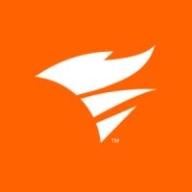

Samanage and GLPI by Teclib are competing in the IT service management space. Data indicates Samanage has the edge in user-friendly deployment, while GLPI by Teclib offers stronger scalability and features.
Features: Samanage's key features include an intuitive service catalog, automation capabilities, and integrations with popular apps. GLPI by Teclib provides comprehensive asset management, plugin support, and a customizable interface. This extensive functionality of GLPI by Teclib offers a significant edge in complex IT environments.
Ease of Deployment and Customer Service: Samanage offers a swift cloud-based deployment and responsive customer service, providing rapid assistance to businesses. GLPI by Teclib presents a flexible deployment model with both on-premise and cloud hosting options, necessitating more setup time initially. Both products offer support, but Samanage has been highlighted for its superior quick-start guidance and ongoing assistance, appealing to those seeking minimal implementation hurdles.
Pricing and ROI: Samanage's subscription model ensures predictable costs and efficiency-driven ROI, proving attractive for smaller businesses. GLPI by Teclib's open-source approach allows for a lower initial cost, but customization may involve additional expenses. Evaluations suggest Samanage's transparent pricing aligns with strong ROI for small enterprises, while GLPI by Teclib's scalability can yield higher long-term ROI for larger businesses.


GLPI by Teclib focuses on asset management and ticketing, utilizing agent-based asset tracking and offering integration with systems like Active Directory. It also serves as a CMDB, supporting functions such as financial and contract management alongside project tools and network monitoring.
GLPI by Teclib is leveraged for its comprehensive ITSM capabilities, allowing organizations to manage assets and support tickets effectively. It offers integration with LDAP and Active Directory for seamless asset tracking and ticket management. Financial tracking, contract management, and project tools bolster its functionality, while network monitoring and software inventory provide additional insights. Customization through plugins enhances its adaptability, operating efficiently across Linux servers. Despite challenges like plugin management and PHP issues, improvements in features such as communication error handling and permission flexibility can enhance its IT operations further.
What are the key features of GLPI by Teclib?GLPI by Teclib finds application across industries for its extensive ITSM functionalities. IT departments in healthcare, education, and finance sectors rely on it for efficient asset management and support ticket handling. Its role as a CMDB aids organizations in maintaining detailed records of their IT environments, while financial tracking and contract management functionalities cater to stringent compliance and regulatory needs. Educational institutions leverage GLPI's project management and network monitoring capabilities to oversee IT services and infrastructure effectively.
We monitor all IT Service Management (ITSM) reviews to prevent fraudulent reviews and keep review quality high. We do not post reviews by company employees or direct competitors. We validate each review for authenticity via cross-reference with LinkedIn, and personal follow-up with the reviewer when necessary.